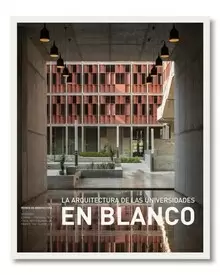
AA.VV
El panorama universitario actual se muestra bien diferente al de los años 60 y 70 con la llegada masiva de estudiantes a la universidad que propició la adopción de políticas relativas a los modelos de enseñanza, a la planificación de los campus y al espacio que debía dar soporte al aprendizaje.
No solamente los espacios de aprendizaje se han visto profundamente transformados gracias a las nuevas tecnologías, sino que además las instituciones se juegan su visibilidad en un escenario de competitividad internacional. Las universidades se someten ahora a unas reglas de mercado que modelan sus políticas: una brillante producción científica, fructíferas relaciones con la industria, demostrada transferencia de conocimiento a la sociedad, y una atractiva oferta de titulaciones con promesas de alta empleabilidad.
Este número especial de En Blanco recoge cinco recientes producciones que evidencian una evolución de aquellas preguntas lanzadas hace medio siglo mediante nuevas respuestas que siguen alimentando las reflexiones.
Características